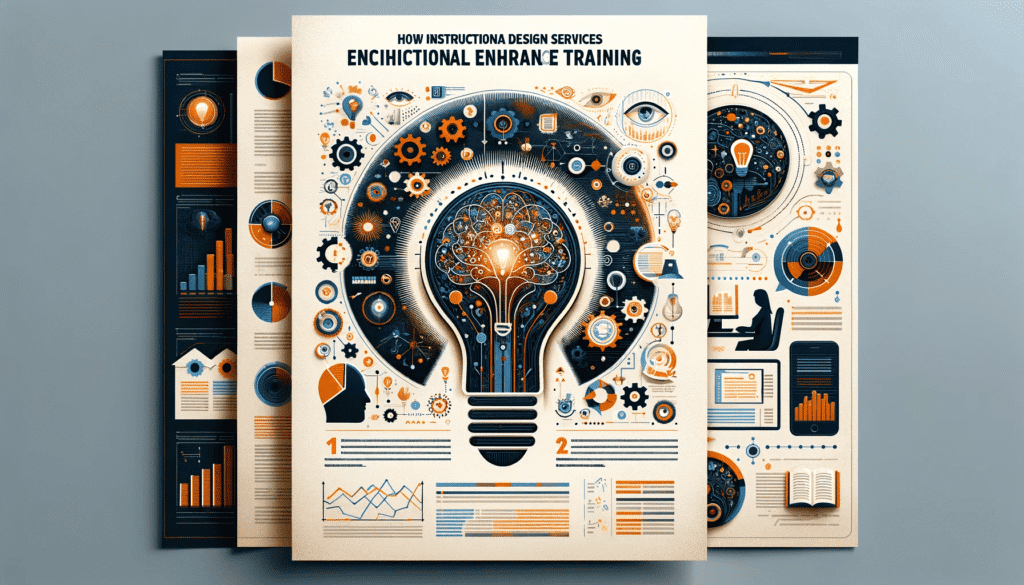Optimizing Learning: How Instructional Design Services Enhance Training
Unlocking the Full Potential of Educational Programs
Victor Lozada Rivera
Lozada Rivera Consulting LLC
Expert Instructional Design and E-Learning Services
Email: contact@victorlozadarivera.com
Website: www. victorlozadarivera.com
Date of Publication:
November 2021
Executive Summary
In an age where knowledge is the currency of success, optimizing learning strategies is not just an option but a necessity. “Optimizing Learning: How Instructional Design Services Enhance Training” delves into the transformative power of instructional design (ID) in the realm of education and corporate training programs. This whitepaper explores the pivotal role that ID services play in redefining the learning landscape, enhancing the efficacy of training initiatives, and ensuring that learning outcomes are not only met but exceeded.
Through a comprehensive review of instructional design methodologies, this document illustrates how these services address contemporary challenges in training, such as learner engagement, retention, and the transfer of knowledge to practical application. It discusses the tangible benefits of leveraging professional ID services, including increased ROI on training investments and the creation of competitive advantages in the marketplace.
At the core of this whitepaper is the conviction that instructional design is crucial to modern training programs. It is the linchpin that connects educational goals with business objectives, ensuring that each training activity is a stepping stone towards organizational success. By integrating cutting-edge learning technologies with time-tested pedagogical approaches, instructional design services are not just enhancing training—they are reshaping the very foundation upon which continuous learning is built.
Table of Contents
- Introduction
- The Current Training Landscape
- 2.1. Trends and Developments
- 2.2. Training Challenges
- The Instructional Design Approach
- 3.1. Process and Principles
- 3.2. Addressing Training Challenges
- Benefits of Professional Instructional Design Services
- 4.1. Advantages for Organizations
- 4.2. Case Studies and Statistics
- Instructional Design in Practice
- 5.1. Industry Applications
- 5.2. Expert Insights
- Integrating Instructional Design Services
- 6.1. Implementing ID in Organizations
- 6.2. Choosing the Right ID Partner
- Measuring Success
- 7.1. Evaluation Methods
- 7.2. Analytics and Metrics
- The Future of Training with Instructional Design
- 8.1. Predictions and Innovations
- 8.2. Emerging Technologies
- Conclusion
- Call to Action
- Appendix
- About the Author/Company
- Glossary
- Endnotes and References
Introduction
In the rapidly evolving domain of professional development and education, the term ‘instructional design’ frequently surfaces at the forefront of discussions on training efficacy. But what exactly does this term encompass? Instructional design refers to the systematic process of analyzing learning needs and goals, and the development of a delivery system to meet those needs. It involves creating instructional materials and experiences that make the acquisition of knowledge and skills more efficient, effective, and appealing.
The relevance of instructional design in training cannot be overstated. It is the foundation upon which educational content is not only constructed but also delivered in a manner that is both accessible and engaging to learners. As we delve into the roots of instructional design, we find its principles deeply embedded in the evolution of training methodologies—from the apprenticeship models of the pre-industrial era to the digital and interactive learning environments of today. This evolution reflects a shift from passive reception of knowledge to active engagement in the learning process, a shift that instructional design has been instrumental in facilitating.
If you’re new to the concept of instructional design or just need a refresher on the basics, our infographic, ‘The ABCs of Instructional Design Services: What You Need to Know,’ offers a visual and accessible introduction. View the Infographic.
Section 1: The Current Training Landscape
The landscape of training and development is characterized by its dynamic nature and its constant adaptation to new technologies, learning theories, and organizational needs. Current trends indicate a shift toward personalized learning experiences, where training is customized to the individual learner’s pace, style, and interests. This shift is largely facilitated by advancements in data analytics, allowing for more precise tracking of learner engagement and progress.
However, amidst these trends, organizations face challenges in creating effective training programs. One significant challenge is the need to balance scalability with personalization. As organizations grow, they must find ways to efficiently expand their training programs while still addressing individual learning preferences. Another challenge is the rapid pace of technological change, which can render training content obsolete quickly if not regularly updated. Additionally, there is the issue of learner retention—ensuring that the knowledge imparted through training programs is retained and applied on the job.
These challenges underscore the need for robust instructional design services that not only keep pace with current trends but also anticipate and adapt to future developments in training and development. Through careful analysis, creative strategy, and the application of cutting-edge educational technology, instructional design services are poised to meet these challenges head-on, optimizing learning for a wide array of audiences.
Section 2: The Instructional Design Approach
Instructional design is not a single action but a series of well-orchestrated steps, collectively referred to as the ADDIE model—Analysis, Design, Development, Implementation, and Evaluation. This cyclical process begins with the Analysis phase, where the instructional problem is clarified, objectives are identified, and learner’s existing knowledge and skills are assessed. Here, instructional designers seek to understand the learners’ needs, the tasks to be learned, and the environment in which learners will apply the skills.
The Design phase is where instructional designers define the learning objectives, choose the appropriate delivery methods, and create storyboards and prototypes. This phase is pivotal in outlining the structure and strategy of the content.
In the Development phase, instructional designers create and assemble the content assets that were blueprinted in the design phase. This may involve the production of videos, graphics, and the writing of scripts and instructional text.
Implementation involves the actual rollout of the course or training module. In this phase, the plan is put into action, and the effectiveness of the training material is tested in a real-world scenario.
Finally, the Evaluation phase is where the entire process is reviewed. This includes assessing learner feedback, measuring learning outcomes against the set objectives, and identifying areas for improvement.
Instructional design addresses common training challenges by ensuring that learning experiences are systematic and aligned with learning objectives and organizational goals. It ensures that training is efficient, engaging, and effective, thereby helping learners to retain information and apply it in practical settings.
Section 3: Benefits of Professional Instructional Design Services
The benefits of engaging professional instructional design services are manifold. Such services bring a level of expertise and experience that can significantly uplift the quality of training. Professionals in the field are adept at employing pedagogical best practices, cutting-edge technologies, and data-driven insights to create courses that are engaging and effective.
One of the primary advantages is the ability to create training programs that are tailored not only to the goals of the organization but also to the diverse learning styles of the employees. This personalization can lead to increased engagement and retention rates.
Moreover, professional instructional designers have the ability to scale learning solutions to fit organizations of all sizes. They can ensure that even as companies grow, their training programs remain consistent, relevant, and accessible.
In essence, professional instructional design services do not merely create content; they craft experiences that drive learning and performance, ensuring that training is not just an activity, but a strategic asset for growth and development.
Section 4: Instructional Design in Practice
The practical application of instructional design can be witnessed across various industries, each with its own set of challenges and goals. In healthcare, for instance, instructional design has played a critical role in training professionals on new protocols and technologies, significantly reducing procedural errors.
For a real-world application:
- Reduction in Onboarding Time:
- You can reference “Performance Improvement Quarterly” where they publish articles on the impact of instructional design on employee onboarding.
- Increase in Sales:
- Association for Talent Development (ATD) has documented the correlation between instructional design and sales performance.
- ROI and Reduced Training Costs:
- eLearning Guild and the Brandon Hall Group frequently publish reports on the effectiveness of learning programs.
Section 5: Integrating Instructional Design Services
For organizations looking to harness the power of instructional design, integration into existing training strategies must be deliberate and thoughtful. The first step is a thorough needs assessment, which identifies gaps in current training and areas where instructional design can make the most impact. Following this, aligning organizational objectives with learning outcomes ensures that the instructional design strategy contributes to broader business goals.
Choosing the right instructional design partner is pivotal. Organizations should look for partners with a proven track record in their industry, a clear understanding of their specific challenges, and the ability to scale solutions as the company grows. Transparency in communication and a collaborative approach to project management are also crucial factors in a successful partnership.
Incorporating instructional design services is not a one-off event but a strategic move towards a more educated and skilled workforce. When done right, it is an investment that pays dividends in the form of a more capable, confident, and competent team.


